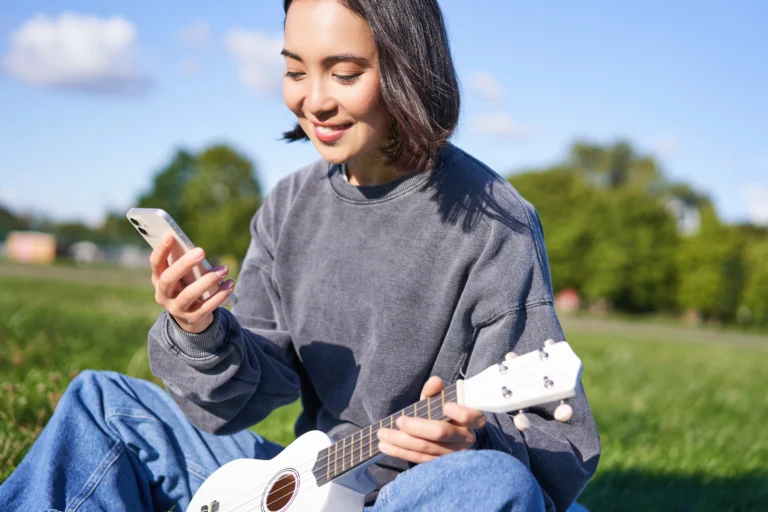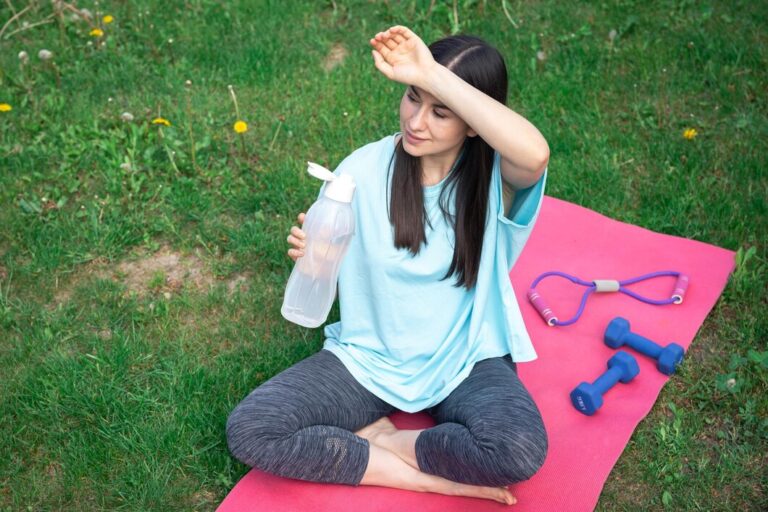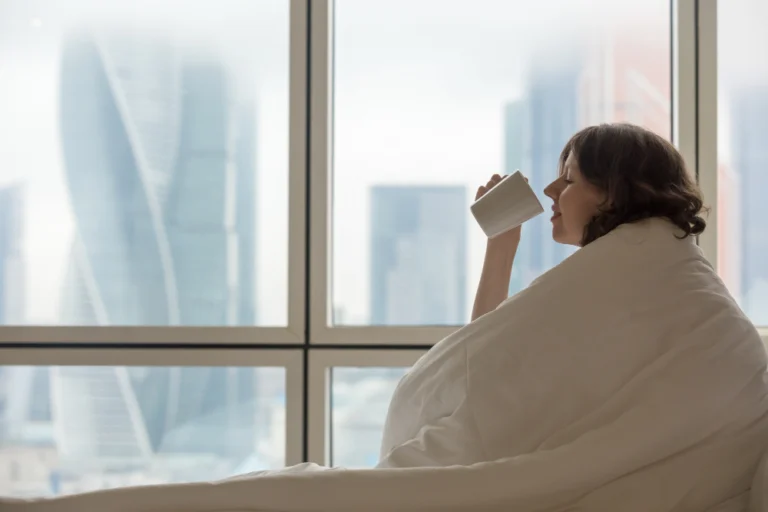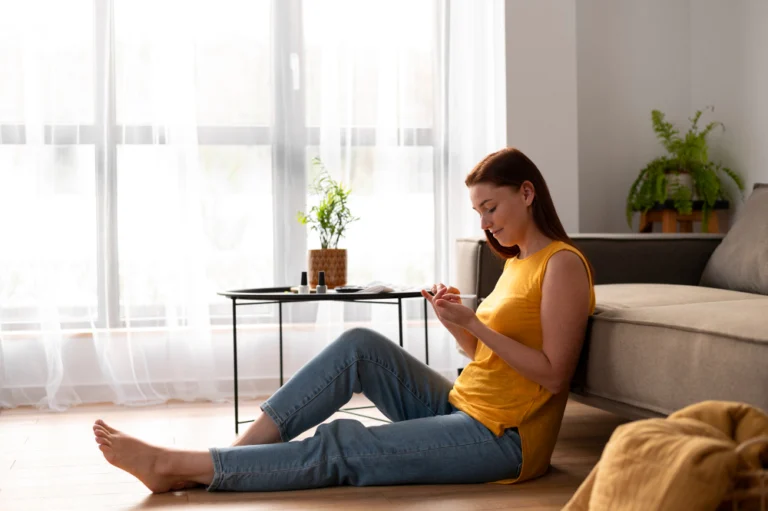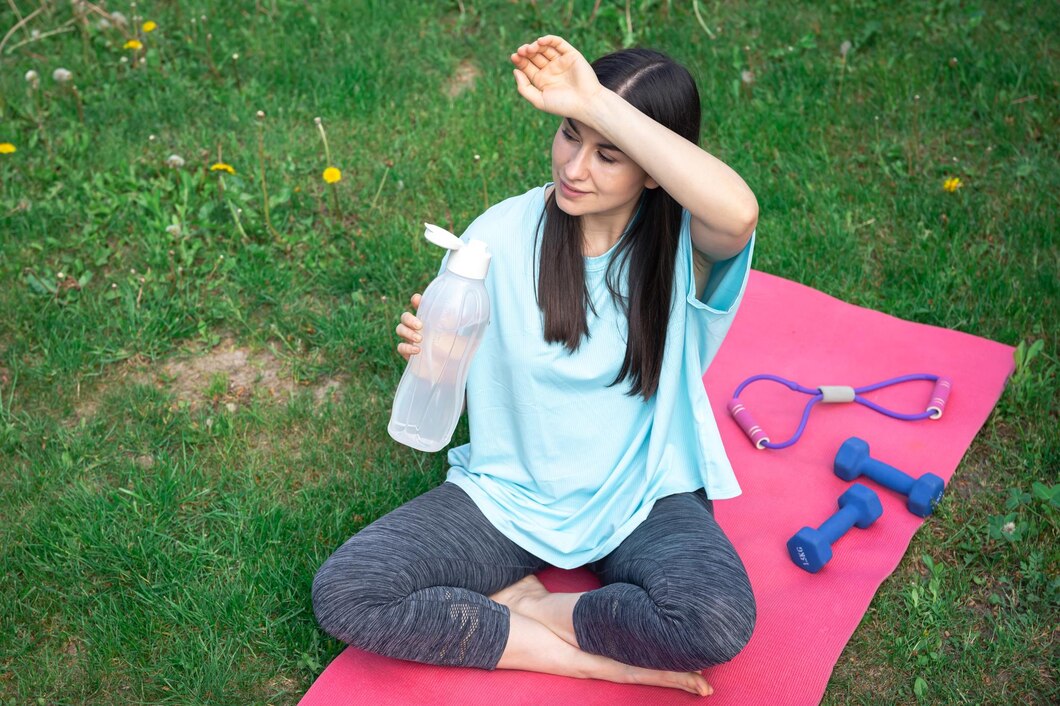
In a world increasingly dominated by screens, notifications, and constant digital stimulation, the concept of engaging in offline hobbies has become more vital than ever for our mental well-being. While technology offers undeniable conveniences, the relentless digital overload it often brings can exacerbate feelings of stress, overwhelm, and anxiety.
This is where the power of hobbies that reduce anxiety comes into play. Deliberately stepping away from screens and immersing ourselves in tangible, real-world pursuits offers a profound antidote to the incessant demands of modern life.
Engaging in anxiety-reducing activities that are screen-free hobbies for anxiety can significantly improve mental clarity, emotional regulation, and overall peace of mind, proving that sometimes, the best remedy is to simply disconnect to reconnect with ourselves.
The Problem with Perpetual Digital Connection
Before diving into the solutions, it’s crucial to understand why a break from digital interaction is so beneficial. Our digital devices, while useful, often contribute to anxiety through:
- Constant Stimulation: Notifications, endless feeds, and the pressure to be constantly “on” keep our brains in a state of hyper-arousal, making it difficult to relax and unwind.
- Social Comparison: Social media platforms often present idealized versions of others’ lives, leading to feelings of inadequacy, jealousy, and social anxiety.
- Information Overload: The sheer volume of news, updates, and data can be overwhelming, triggering anxiety about current events or future uncertainties.
- Blue Light Exposure: Prolonged exposure to blue light from screens, especially in the evening, disrupts melatonin production, negatively impacting sleep quality, which is a significant factor in anxiety levels.
- Lack of Deep Engagement: Many digital interactions are superficial, preventing the deep, immersive engagement that often characterizes truly satisfying and anxiety-reducing activities.
Recognizing these digital pitfalls underscores the importance of seeking out offline activities for anxiety that allow our minds to reset and our bodies to engage in more natural, calming rhythms.
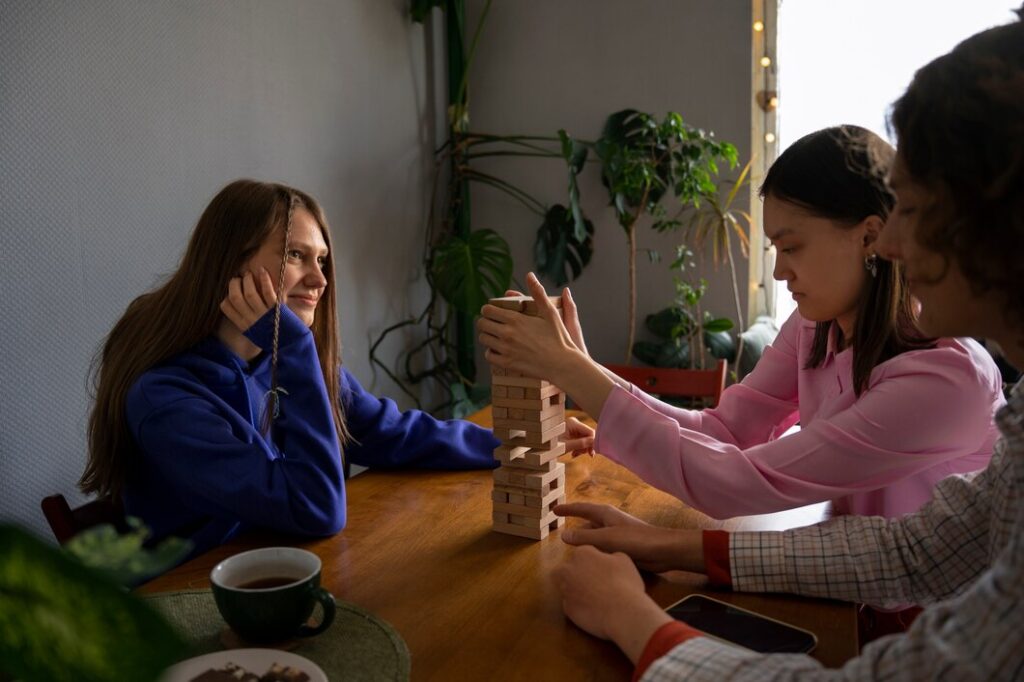
The Healing Power of Offline Engagement
Hobbies that reduce anxiety work through several psychological and physiological mechanisms:
- Mindfulness and Flow State: Many offline activities require focus and attention, drawing you into the present moment. This naturally cultivates mindfulness, reducing rumination about past worries or future anxieties. When deeply engrossed, you can enter a “flow state,” a highly enjoyable mental state where time seems to disappear, and self-consciousness fades. This is a powerful antidote to anxiety.
- Sense of Accomplishment and Competence: Completing a physical project, learning a new skill, or making tangible progress provides a genuine sense of achievement. This boosts self-esteem and self-efficacy, countering feelings of helplessness that often accompany anxiety.
- Stress Hormone Reduction: Engaging in enjoyable, calming activities can lower levels of cortisol (the stress hormone) and increase the production of endorphins and other feel-good neurotransmitters like dopamine and serotonin, which have mood-boosting and anxiety-reducing effects.
- Improved Cognitive Function: Taking breaks from digital screens allows the brain to rest and consolidate information. Many offline hobbies, especially those requiring problem-solving or creativity, can actually improve cognitive functions like memory, attention span, and critical thinking.
- Enhanced Social Connection (Real-World): While digital platforms offer connection, many offline activities for anxiety provide opportunities for genuine, in-person social interaction, which is a powerful buffer against loneliness and anxiety.
- Connection to Nature: Many screen-free hobbies for anxiety involve being outdoors, which has well-documented benefits for mental health, including reduced stress, improved mood, and increased feelings of vitality.
- Setting Boundaries: Committing to an offline hobby forces you to set boundaries with your digital devices, creating essential periods of disconnection that are crucial for mental rest.
Top Offline Hobbies That Reduce Anxiety
Here’s a comprehensive look at various anxiety-reducing activities categorised for different preferences:
Creative & Expressive Hobbies:
- Drawing, Painting, and Sketching:
- How it helps: Engaging the visual cortex and fine motor skills in a creative pursuit is deeply meditative. Focusing on colors, shapes, and textures diverts attention from anxious thoughts. The process, not just the outcome, is therapeutic.
- Screen-free benefits: No comparison to online artists, just personal expression.
- Getting started: A simple sketchbook and pencils or a basic watercolor set. Many free tutorials are available offline in books or from local classes.
- Knitting, Crocheting, and Sewing:
- How it helps: The repetitive motions of these crafts are inherently calming and rhythmic, similar to meditation. The tangible progress of creating something stitch by stitch provides a strong sense of accomplishment.
- Screen-free benefits: Offers a productive way to keep hands busy without digital input, ideal for reducing fidgeting associated with anxiety.
- Getting started: Yarn and needles/hooks or fabric and a sewing kit. Numerous beginner patterns are available in books or from craft stores.
- Playing a Musical Instrument:
- How it helps: Learning and practicing an instrument engages multiple brain areas, improving focus and cognitive function. Music itself has powerful emotional effects, and creating it can be deeply cathartic and joyful.
- Screen-free benefits: Requires full, auditory and motor engagement, leaving no room for digital distraction.
- Getting started: A simple guitar, ukulele, keyboard, or even a harmonica. Many beginner books and local teachers can guide you.
- Writing (Journaling, Poetry, Fiction):
- How it helps: Putting thoughts and feelings onto paper can be incredibly therapeutic, allowing for emotional processing and gaining perspective on anxieties. Creative writing provides an escape and a way to build new worlds.
- Screen-free benefits: A physical notebook and pen remove the temptation of digital distractions and offer a more tactile, reflective experience.
- Getting started: A notebook, a pen, and an open mind. Start by simply writing for 5-10 minutes each day.
- Pottery or Clay Sculpting:
- How it helps: The tactile sensation of working with clay is grounding and stress-relieving. The process of shaping something from raw material is deeply satisfying and requires sustained focus.
- Screen-free benefits: A truly hands-on experience that demands presence.
- Getting started: Look for local pottery studios that offer beginner classes or buy air-dry clay for home use.
Nature & Outdoors Hobbies:
- Gardening:
- How it helps: Connecting with nature, nurturing living things, and engaging in physical activity outdoors are powerful anxiety reducers. The cyclical nature of gardening (planting, growing, harvesting) offers perspective and patience.
- Screen-free benefits: Immerses you in sensory experiences (smell of soil, touch of leaves, sight of blooms) that are entirely non-digital.
- Getting started: A few pots, some seeds or small plants, and basic gardening tools. Even a small herb garden on a windowsill can be beneficial.
- Hiking and Walking in Nature:
- How it helps: Physical exercise is a proven anxiety reducer, and doing it in nature amplifies the benefits. The sights and sounds of natural environments are inherently calming, reducing rumination and stress.
- Screen-free benefits: Encourages disconnecting from technology and fully appreciating your surroundings.
- Getting started: Comfortable shoes and a local park, nature trail, or wilderness area.
- Birdwatching:
- How it helps: Requires patience, quiet observation, and keen attention to detail, fostering mindfulness and present-moment awareness. It encourages spending time outdoors in peaceful settings.
- Screen-free benefits: A gentle, contemplative activity that pulls you away from digital noise.
- Getting started: A pair of binoculars, a field guide, and a quiet spot in nature.
- Fishing:
- How it helps: The waiting, the focus on the water, and the quiet solitude of fishing can be profoundly meditative. It forces you to slow down and embrace patience.
- Screen-free benefits: A truly immersive outdoor experience that promotes stillness.
- Getting started: A simple fishing rod, bait, and a local fishing spot (check for licenses/regulations).
- Camping:
- How it helps: Disconnecting from modern conveniences and immersing yourself in nature can be a powerful reset. The simplicity and focus on survival skills reduce everyday stressors.
- Screen-free benefits: A complete digital detox, forcing a reliance on the real world.
- Getting started: Basic camping gear (tent, sleeping bag) and a chosen campsite.
Mindful & Reflective Hobbies:
- Reading Physical Books:
- How it helps: Immersing yourself in a story or learning from a physical book provides a deep mental escape. It engages imagination and critical thinking without the distractions of a screen.
- Screen-free benefits: No notifications, no hyperlinks, just linear focus.
- Getting started: A trip to your local library or bookstore.
- Journaling and Reflection:
- How it helps: Beyond creative writing, dedicated journaling for self-reflection allows you to externalize anxieties, explore their roots, and brainstorm solutions. It provides a private space for emotional processing.
- Screen-free benefits: The tactile act of writing by hand can be more grounding than typing.
- Getting started: A beautiful notebook and a pen you enjoy using.
- Meditation and Yoga:
- How it helps: These practices are specifically designed to reduce anxiety by training the mind to focus, observe thoughts without judgment, and regulate breathing. Yoga combines physical postures with breathwork and mindfulness.
- Screen-free benefits: Can be done anywhere, anytime, requiring no devices.
- Getting started: Many free apps and online resources offer guided meditations, but the goal is to practice without constant reliance on a screen. Books or local classes can be excellent alternatives.
- Puzzles (Jigsaw, Crossword, Sudoku):
- How it helps: These activities require focused attention and problem-solving, distracting the mind from anxious thoughts. Completing a puzzle provides a satisfying sense of accomplishment.
- Screen-free benefits: A tangible, engaging challenge that doesn’t involve a screen.
- Getting started: A puzzle from a toy store, a crossword book, or a newspaper.
- Learning a New Language (with physical resources):
- How it helps: The mental challenge of learning something new stimulates cognitive function and provides a sense of growth. Practicing vocabulary and grammar requires deep focus.
- Screen-free benefits: Use textbooks, flashcards, or practice with a real person.
- Getting started: A beginner’s textbook and notebook for your chosen language.
Social & Community Hobbies:
- Volunteering:
- How it helps: Focusing on helping others shifts attention away from personal worries. It provides a sense of purpose, builds community, and can introduce you to new perspectives.
- Screen-free benefits: Direct, in-person interaction and hands-on work.
- Getting started: Research local charities or community organizations that align with your interests.
- Joining a Book Club or Discussion Group:
- How it helps: Engaging in meaningful conversations, sharing ideas, and connecting with like-minded individuals combats loneliness and provides intellectual stimulation.
- Screen-free benefits: Real-world social interaction that fosters deeper connection than online forums.
- Getting started: Check with local libraries, community centers, or bookstores for existing clubs.
- Taking a Class (Cooking, Dance, Art, Martial Arts):
- How it helps: Learning a new skill in a structured environment provides focus, builds confidence, and offers social interaction. Physical classes like dance or martial arts also provide excellent exercise.
- Screen-free benefits: Hands-on learning and in-person instruction.
- Getting started: Look for local community colleges, art studios, dance schools, or martial arts dojos.
- Playing Board Games or Card Games:
- How it helps: Engages the mind in strategy and problem-solving, while providing social interaction and laughter. It’s a fun way to connect with others without screens.
- Screen-free benefits: Fosters direct engagement and conversation.
- Getting started: Gather friends or family, choose a game, and set aside time.
Hands-On & Practical Hobbies:
- Cooking and Baking:
- How it helps: The sensory experience of cooking (smells, textures, tastes), the precision required, and the tangible outcome of a delicious meal can be very grounding and satisfying.
- Screen-free benefits: A truly immersive, multi-sensory experience that takes you away from screens.
- Getting started: Choose a recipe, gather ingredients, and enjoy the process.
- Woodworking or DIY Projects:
- How it helps: Working with your hands to create something functional or beautiful is incredibly rewarding. It requires problem-solving and focus, diverting attention from anxieties.
- Screen-free benefits: A tangible, results-oriented craft that builds practical skills.
- Getting started: Start with simple projects like building a small shelf or repairing furniture. Look for beginner guides at hardware stores or libraries.
- Photography (with a physical camera, developing prints):
- How it helps: Cultivates observation skills and encourages you to slow down and truly see the world around you. The process of capturing and developing images can be deeply satisfying.
- Screen-free benefits: Focus on the mechanics of a physical camera and the art of printing, rather than endless digital editing.
- Getting started: A basic film camera and a roll of film, or even a digital camera used without immediate screen review.
- Collecting (Stamps, Coins, Records, etc.):
- How it helps: The systematic organization, research, and pursuit of items for a collection can be a calming and engaging mental activity. It provides a sense of purpose and discovery.
- Screen-free benefits: Focus on physical objects and their history, often involving real-world interactions with other collectors.
- Getting started: Choose an area of interest and begin researching.
Making the Shift: Integrating Offline Hobbies into Your Life
Transitioning from a screen-heavy existence to one enriched by offline activities for anxiety requires intentionality:
- Start Small: You don’t need to commit to hours of a new hobby immediately. Begin with 15-30 minutes a few times a week.
- Make It a Priority: Block out time for your hobby just like a scheduled meeting. Put it on your calendar.
- Create a Dedicated Space: If possible, have a designated area for your hobby to make it easier to start.
- Remove Temptations: During your hobby time, put your phone in another room, turn off notifications, or set it to airplane mode.
- Be Patient: Learning a new hobby takes time. Don’t get discouraged by initial difficulties; focus on the process, not just perfection.
- Explore and Experiment: Try different screen-free hobbies for anxiety until you find what truly resonates with you. What one person finds relaxing, another might find frustrating.
- Involve Others: Some hobbies are more enjoyable and sustainable when shared with friends or family, providing an added layer of social connection.
Conclusion
The pervasive influence of our digital world makes it increasingly essential to proactively seek out offline hobbies that reduce anxiety. These anxiety-reducing activities are not merely quaint pastimes; they are potent tools for mental well-being, offering sanctuaries of calm, creativity, and genuine connection in an otherwise hyper-stimulated existence.
By consciously embracing screen-free hobbies for anxiety, we give our brains the vital rest they need from constant digital demands, foster mindfulness, cultivate a sense of accomplishment, and ultimately, reclaim significant portions of our energy and peace of mind. The choice to disconnect from
